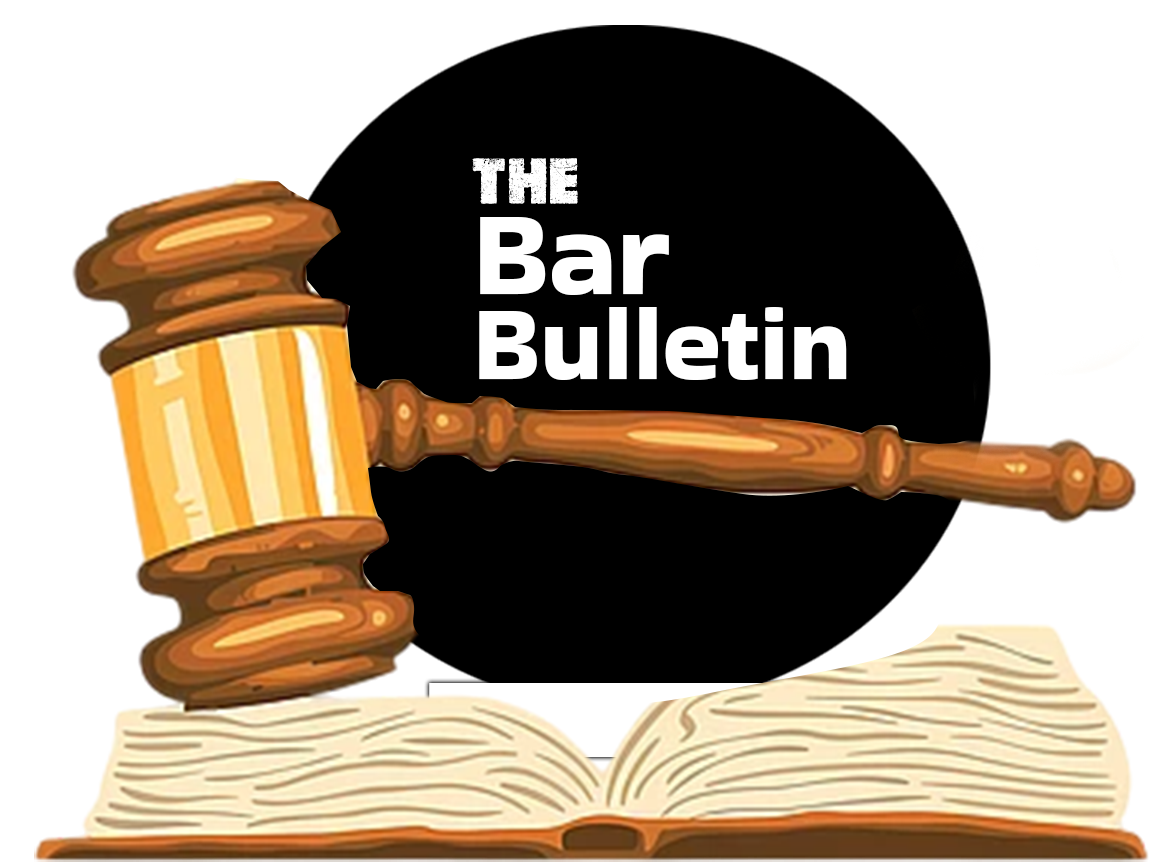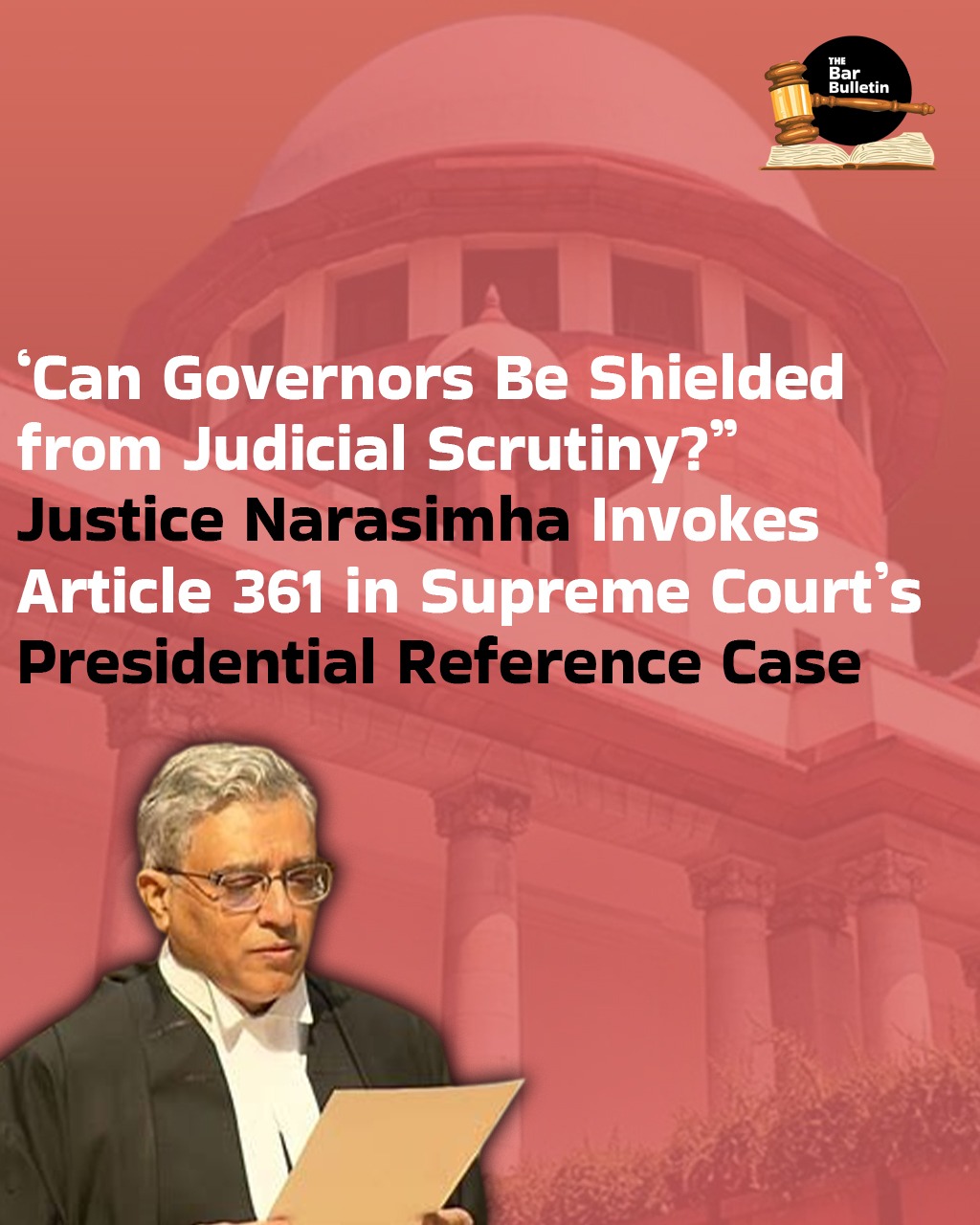The Supreme Court on Tuesday, August 19 formed The Five Constitution Bench comprising of Chief Justice BR Gavai, Justices Surya Kant, Vikram Nath, PS Narasimha, and Atul S. Chandurkar to hear on the Presidential Reference case under Article 143, concerning the scope of powers exercised by Governors and the President in relation to bills passed by State legislatures.
The reference posed two central questions: whether the Constitution prescribes fixed timelines for the grant of assent/permission to pass a bill , and whether prolonged inaction on the part of the Governor or the President can lead to a conclusion of “deemed assent” which means passed without a fixed approval. The matter was referred to the Court following its 2024 decision in the Tamil Nadu Governor’s case, where a Division Bench had held that the Governor acted without bona fides in reserving bills for Presidential consideration, and further that Presidential inaction beyond three months would automatically be treated as assent.
The OPPOSITION ON MAINTANIBILITY-
In the preliminary hearings, Senior Advocate K.K. Venugopal, appearing for Kerala,contended that the reference was not maintainable. He argued that Article 143 cannot be invoked as a device to unsettle binding judgments of the Court. Since Article 141 makes Supreme Court decisions binding across all authorities, the Union could not bypass review or curative jurisdiction by approaching the Court indirectly through the President. He described this as a subversion of the judicial route, warning that permitting such references would weaken the finality of judgments.
For Tamil Nadu, Senior Advocate Abhishek Manu Singhvi submitted that the earlier ruling had, in effect, rewritten Article 200, a provision that regulates a Governor’s role when presented with State legislation. Singhvi maintained that such a far-reaching constitutional reinterpretation should have been referred to a larger Bench under Article 145(3)(lays down the precedent of a minimum of five judges to overlook any case which forms a substantial question of law) rather than the matter being left to a Division Bench.Both counsel relied heavily on the 2G Spectrum judgment (Centre for Public Interest Litigation v. Union of India, (2012) 3 SCC 1). They highlighted its distinction between a binding “decision” and an evolving “view of law.” A decision, once rendered, cannot be reopened between the same parties except through review or curative proceedings, even though the broader view of law may evolve in future cases. They cautioned that unsettling the balance between these two concepts would destabilize settled law and shake the future judgements of the apex court easily.
THE UNION ON DEADLINES FOR GOVERNORS-
Defending the reference, Attorney General R. Venkataramani argued that the President was constitutionally entitled to seek clarity on issues of public importance. He traced the evolution of Article 200 from colonial laws to the present Constitution. While the Governor General once enjoyed wide discretion, the Constituent Assembly consciously removed that discretion from the President. Nevertheless, Governors were left with limited leeway in federal contexts.
Here, Venkataramani outlined the “four options” available to a Governor which he quoted as (i) granting assent, (ii) withholding assent, (iii) returning the bill for reconsideration, or (iv) reserving it for Presidential consideration. He emphasised that these options, recognised by the Sarkaria and Punchhi Commissions which examine Centre-State relations, and defined the role of the Governor which must be respected without judicially inventing additional rules. He was critical of the Tamil Nadu ruling, which introduced a three-month time limit and a concept of deemed assent, asserting that the makers of Constitution themselves were aversive to timelines precisely to prevent State legislation from expiring upon Assembly dissolution.In Article 142, the Attorney General cautioned that while the Court may render complete justice, it cannot deploy this power to rewrite constitutional provisions or diminish the roles of the Governor and the President.
Similarly, Solicitor General Tushar Mehta, also representing the Union, described the matter as one of high constitutional significance that touches the very federal balance of the Republic.
“If your lordships can take a holistic reading of the five articles of the Constitution. And within these five articles, I think Your Lordships will be able to advise the honourable President” Mehta submitted to the judges.
He stressed that only the President and Governors swear an oath to “defend the Constitution of India,” while other functionaries merely swear to “abide” by it. This distinction, he argued, reflected the Constitution framers’ intent that these offices would serve as guardians of constitutional balance.Mehta presented an extensive historical survey, citing the Government of India Acts of 1919 and 1935, drafts prepared by B.N. Rau – the architect of the Indian Constitution, and Constituent Assembly debates. He noted that earlier provisions gave the Governor General wide discretion, including the power to withhold assent or return bills at will. In contrast, the Constitution of India deliberately eliminated such discretion for the President under Article 74, binding him to act on ministerial advice, while retaining limited discretionary authority for Governors under Article 163.The Solicitor General urged the Court to interpret the five provisions collectively which are – Article 111 (President’s assent), Article 74 (Council of Ministers’ aid and advice), Article 155 (appointment of Governors), Article 163 (Governor’s aid and advice), and Article 200 (Governor’s options on assent). Only by examining these together, he said, could the Court advise the President on the constitutional scheme.
The Bench actively engaged with both sides. During the hearings, members of the Bench raised significant questions. Justice Narasimha asked whether Article 361 shielded Governors from judicial scrutiny, while the Chief Justice pointed out that even if the Court entertains the reference, it is free to decide whether to answer all fourteen questions or only some.
The Court with no clear finality has concluded arguments on maintainability and reserved its decision on whether to proceed further with the substantive questions.
Citations-
• State of Tamil Nadu v Governor of Tamil Nadu, (2025) INSC 481
• Centre for Public Interest Litigation v. Union of India (2G Spectrum case), (2012) 3 SCC 1
• In re Cauvery Water Disputes Tribunal, 1992 Supp (1) SCC 594
• Hoechst Pharmaceuticals Ltd. v. State of Bihar, (1983) 4 SCC 45
• Rameshwar Prasad v. Union of India, (2006) 2 SCC 1


One thought on ““Can Governors Be Shielded from Judicial Scrutiny?” Justice Narasimha Invokes Article 361 in Supreme Court’s Presidential Reference Case”
Pingback: SC Hearing on Presidential Reference Day 8: States Oppose Governor’s Veto, Seek Prompt Assent